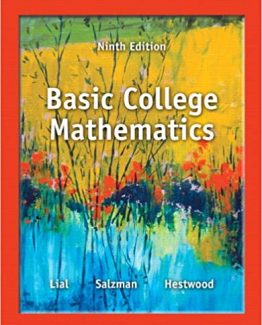Multivariate Statistics for the Environmental Sciences by Peter J. A. Shaw, ISBN-13: 978-0340807637
[PDF eBook eTextbook]
- Publisher: Hodder Education Publishers; 1st edition (May 8, 2003)
- Language: English
- 233 pages
- ISBN-10: 0340807636
- ISBN-13: 978-0340807637
This book introduces the most commonly used techniques for dealing with multivariate data; the sort of multi-species multi-chemical data sets that are routinely encountered in environmental investigations. It assumes prior knowledge of multivariate analyses and requires no mathematics beyond simple linear equations. The topics covered include diversity indices, multiple regression, cluster analysis, and the commoner ordination techniques (principal components analysis, detreded correspondance analysis and canonical correspondence analysis). Other less used ordinations (Bray-Curtis, Correspondence Analysis) are where this helps understanding of the most commonly used techniques. Where suitable, the author shows how to construct biplots and triplots, and how to run Monte-Carlo testing. Each technique is illustrated by worked examples using simple, familiar data sets, and the key features of the output from standard software packages is explained. Pitfalls for the unwary are highlighted wherever they occur. Appendices list and explain the acronyms that can make some published research impenetrable. The availability of each multivariate technique in all major software packages is listed, to help users choose the software suitable for them. The overall aim of the book is to introduce inexperienced users gently to the multivariate analytical tools available to them.
Table of Contents:
Preface
1 Introduction
1.1 What is meant by multivariate statistics?
1.2. The scope of this book
1.3. When multivariate statistics might be used
1.4 Minimum computing requirements
1.5 Preparing the data
1.6 The sample datasets
2 Measurements of ecological diversity
2.1 The concept of diversity
2.2 The Simpson index
2.3. The Shannon index
2.4 Jack-knifing
2.5 Examples
2.6 Further diversity indices
3 Linear regression: simple and multiple
3.1. Introduction
3.2 The data space
3.3. Bivariate linear regression
3.4 Additional independent variables
3.5 Pitfalls for the unwary
3.6 Worked examples
4 Basic concepts in ordination
4.1 Introduction to ordination
4.2 A historical overview of ordination
5 Bray—Curtis ordination
5.1 History of Bray—Curtis ordination
5.2. Theory of Bray—Curtis ordination
5.3. Limitations of Bray—Curtis ordination
6 Principal components analysis
6.1 A brief overview of principal components analysis
6.2 What does PCA achieve?
6.3. Deeper into the mechanics of PCA
6.4 Preliminary interpretation of a PCA
6.5 Other worked examples of PCA
Correspondence analysis, simple and detrended
7.1 General introduction
7.2 Correspondence analysis
7.3. Detrended correspondence analysis
7.4 Worked examples
Classification: cluster analysis and related techniques
8.1 Introduction to classification
8.2 A taxonomy of classification techniques
8.3 Cluster analysis
8.4 Divisive classification techniques
Canonical correspondence analysis (CCA)
9.1 Introduction
9.2 The mechanics of canonical correspondence analysis
9.3 Worked example: CCA on the Wimbledon Common dataset
9.4 Alaskan streams dataset
9.5 Drained mires in Finland
10 A brief review of other multivariate techniques
Appendix 1: Synonyms and acronyms of multivariate techniques
Appendix 2: A general approach to linear regression using linear algebra
Appendix 3: Multivariate software for the environmental researcher
Appendix 4: Suggested further reading
Glossary
Bibliography
Index
Peter Shaw is at School of Life Sciences, University of Surrey Roehampton.
What makes us different?
• Instant Download
• Always Competitive Pricing
• 100% Privacy
• FREE Sample Available
• 24-7 LIVE Customer Support





